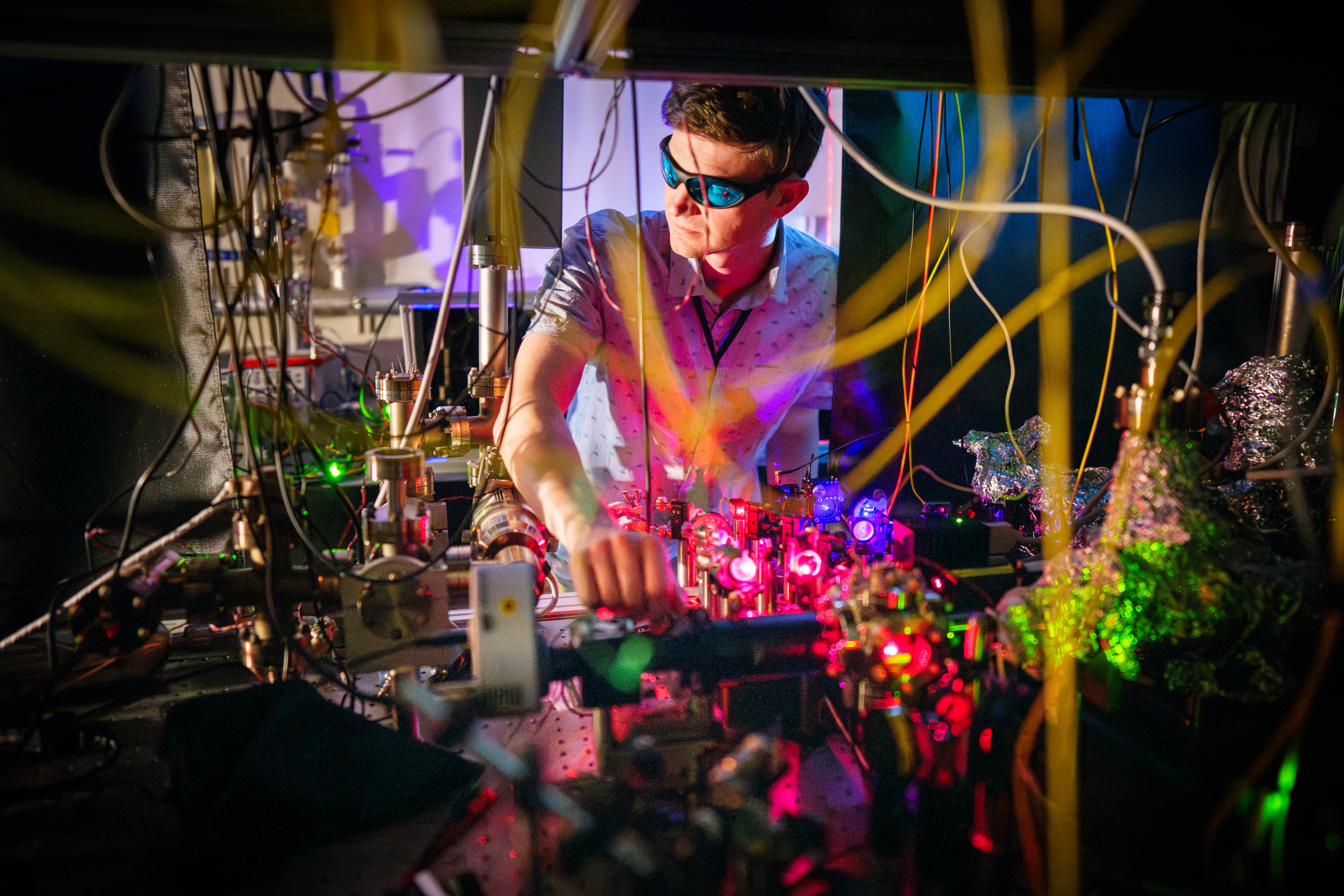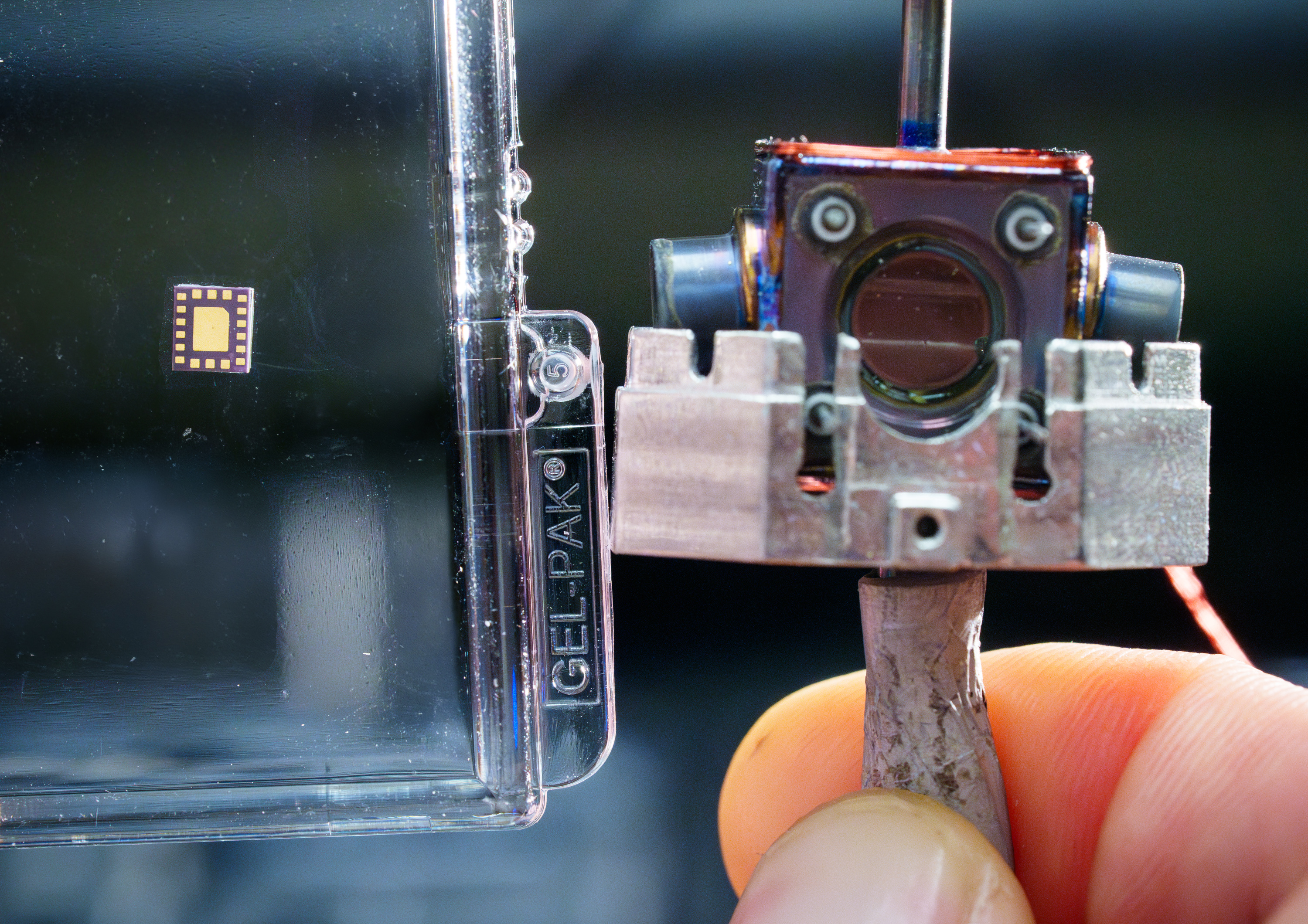News — ALBUQUERQUE, N.M. — All clocks are ticking down to an argument about the time. Imperceptibly, they gain or lose fractions of a second. Gradually, they drift apart until someone reads the time aloud, and somebody with a different clock begs to differ.
Unless clocks are periodically synchronized, drift is just a fact of life. Even super accurate atomic clocks experience drift. While not as much as a cheap bedroom alarm clock, it is still enough to catch the attention of Dan Thrasher, a scientist at Sandia National Laboratories, who believes he can create a better one.
Thrasher is working with Japanese tech company to build the world’s most accurate compact atomic clock. These clocks, currently about the size of a matchbook, are used in a variety of technologies from backpack radios, GPS receivers, underwater sensors, power grids and satellites. Any drift they experience limits the time these technologies can run on their own without help from a reference clock.
His project is supported by the Defense Advanced Research Projects Agency, or DARPA, through a program called . The Defense Department research agency is known for funding high-tech projects with national security applications, like night vision goggles that fit like sunglasses and surveillance implants for insects.
According to Thrasher, scientists have been trying to do what he is doing for the past two decades since the creation of the chip-scale atomic clock, or CSAC (pronounced “sea sack”). The matchbook-sized ticker holds the title of the world’s smallest commercial atomic clock.
“What made it possible was a very small, very stable, very efficient laser,” he said.
The laser is finely tuned to just the right wavelength to tickle atoms of the element cesium, part of an intricate setup that locks in a precise timekeeping rhythm. It was first demonstrated at Sandia.
But the record-holding clock isn’t perfect.
“While a CSAC is small and important, it is still subject to sources of systematic uncertainty. The clock drifts over time,” Thrasher said.
Since 2008, researchers at Sandia have been working on miniaturizing a more accurate, albeit larger, type of timepiece called a microwave ion clock.
“In general, a microwave ion clock experiences less drift than a CSAC,” Thrasher said.
Sandia’s proposed clock would use electrically charged ions of ytterbium instead of cesium. However, no one has been able to demonstrate a small, stable and efficient ultraviolet laser required to operate it.
Unknown to these researchers, Nichia had been making advancements in small laser technology. Its scientists successfully developed a very small, stable and efficient violet-blue laser for displaying information inside smart glasses.
The laser was the same variety used in CSACs, called a vertical cavity surface emitting laser, or VCSEL (rhymes with “pixel”). What’s more, “Nichia had been looking for a new opportunity to showcase the value of its VCSEL with violet-blue wavelength,” a Nichia spokesperson said.
Thrasher lit up when he read a research paper about the laser. Although its wavelength was no good for ytterbium ions, it closely matched the wavelength required for ions of another element — barium.
Barium was nobody’s first choice. As far as elements go, it is equal parts stubborn and sensitive. The last time scientists used barium to demonstrate a microwave ion clock was in 1985.
“Before I was born,” Thrasher said.
“There are very valid reasons to disregard barium. But we have the cat’s meow of laser technology at the right wavelength, and that alone is enough motivation for us to try to develop this,” he said.
Thrasher was confident he could use Nichia’s laser to build an atomic clock based on barium ions that is smaller and more accurate than the CSAC.
“There are some projects I would put my own money into. This is one of them,” he said.
He shared his idea with Nichia and DARPA.
“Nichia gladly accepted Sandia’s offer to support their study because Nichia felt this compact, low-power-consumption, single-frequency laser diode would be a key technology for the small atomic clock Sandia is targeting,” the spokesperson said.
The switch to barium was not as simple as Thrasher had hoped. After boldly defending his proposal as low-hanging fruit, initial tests revealed that the laser deteriorated faster than expected, which meant the clock could be rendered useless after just a short time.
“That scared me,” he said.
But further studies soothed his nerves. After a longer-than-expected “burn-in” time, the rate of deterioration stabilized, indicating that the laser would stay healthy for a long time.
In June, Thrasher successfully used Nichia’s laser to optically detect barium ions and presented his research at the European Frequency and Time Forum in Neuchâtel, Switzerland. While this is not the same as measuring time, it demonstrates the laser possesses all the necessary qualities to operate the clock. The research itself holds potential value for certain types of quantum computing, where lasers are used to make precise measurements of trapped ions.
“This is the first time anyone has used light from a VCSEL to detect trapped ions,” he said.
Thrasher is enthusiastic about the future of his project.
“The light source is clearly the bottleneck in commercializing miniature microwave ion clocks. We are closer than ever before to solving this problem.”
Sandia National Laboratories is a multimission laboratory operated by National Technology and Engineering Solutions of Sandia LLC, a wholly owned subsidiary of Honeywell International Inc., for the U.S. Department of Energy’s National Nuclear Security Administration. Sandia Labs has major research and development responsibilities in nuclear deterrence, global security, defense, energy technologies and economic competitiveness, with main facilities in Albuquerque, New Mexico, and Livermore, California.



